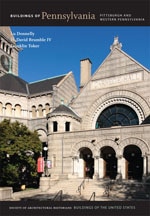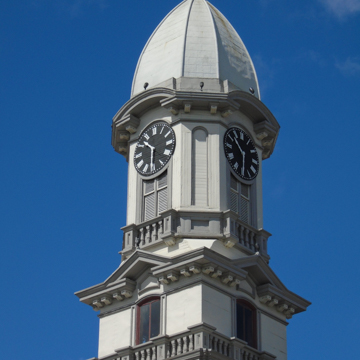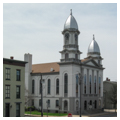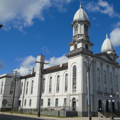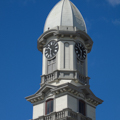Samuel Sloan (1815–1884) began his architectural career in 1849 in eastern Pennsylvania. His fame grew with the publication of his pattern books, and by 1854, two buildings in Lock Haven—the Levi A. Mackey house (
CN6) and Fallon House Hotel (
CN7)—were heavily influenced by his designs. A sojourn in Europe gave Sloan's designs a Beaux-Arts flavor. In
The most impressive features of Clinton's brick and stone courthouse are its two domed towers of different heights on each side of the pedimented facade. Elaborate dormer windows originally in the towers' domes have been removed. The tall and narrow round-arched windows on the facade and the side walls give a distinct vertical emphasis to the courthouse. The first story of smoothly cut Farrandsville stone is outlined by a stringcourse of cut stone, above which the walls are of buff brick. The entrance features three doors set in segmental-arched openings reached by a short flight of stairs.

